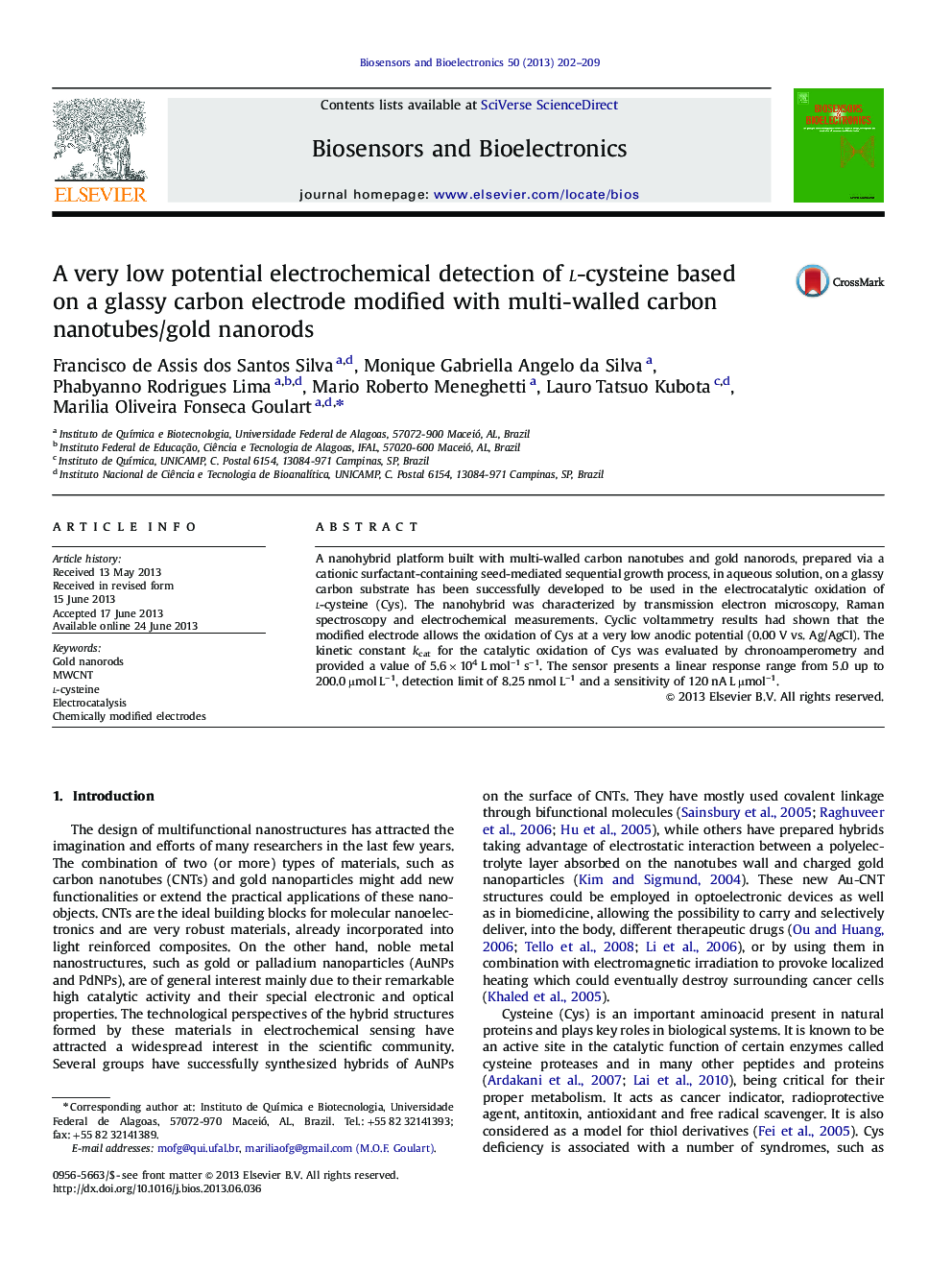| Article ID | Journal | Published Year | Pages | File Type |
|---|---|---|---|---|
| 7233840 | Biosensors and Bioelectronics | 2013 | 8 Pages |
Abstract
A nanohybrid platform built with multi-walled carbon nanotubes and gold nanorods, prepared via a cationic surfactant-containing seed-mediated sequential growth process, in aqueous solution, on a glassy carbon substrate has been successfully developed to be used in the electrocatalytic oxidation of l-cysteine (Cys). The nanohybrid was characterized by transmission electron microscopy, Raman spectroscopy and electrochemical measurements. Cyclic voltammetry results had shown that the modified electrode allows the oxidation of Cys at a very low anodic potential (0.00 V vs. Ag/AgCl). The kinetic constant kcat for the catalytic oxidation of Cys was evaluated by chronoamperometry and provided a value of 5.6Ã104 L molâ1 sâ1. The sensor presents a linear response range from 5.0 up to 200.0 µmol Lâ1, detection limit of 8.25 nmol Lâ1 and a sensitivity of 120 nA L µmolâ1.
Related Topics
Physical Sciences and Engineering
Chemistry
Analytical Chemistry
Authors
Francisco de Assis dos Santos Silva, Monique Gabriella Angelo da Silva, Phabyanno Rodrigues Lima, Mario Roberto Meneghetti, Lauro Tatsuo Kubota, Marilia Oliveira Fonseca Goulart,
